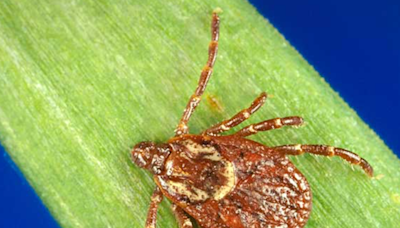Search results
1 day ago · Lyme disease is a tick-borne illness caused by the bacterium Borrelia burgdorferi. It is important to recognize the early symptoms of Lyme disease as prompt diagnosis and treatment can prevent the progression of the disease. One of the most common early symptoms of Lyme disease is the characteristic bull's-eye rash, also known as erythema migrans.
1 day ago · Lyme disease is treatable, and knowing how to prevent tick bites and what symptoms to look for is key, especially as cases rise in Ohio. Early treatment is crucial, so consult your primary care provider if you suspect a tick bite.
1 day ago · In most cases, a tick must be attached for 36 to 48 hours or more before the Lyme disease bacterium can be transmitted. If you remove it within 24 hours, the risk is greatly reduced. Symptoms of Lyme disease may take 3-30 days or longer to appear. In the majority of cases, tick bites are reported in the summer months when ticks are most active ...
2 days ago · Symptoms of Lyme disease typically develop within three to 30 days after a tick bite, including fever, headaches, muscle aches and the classic bulls-eye rash. Meyerson stressed the importance of ...
3 days ago · In this article, Lyme Literate Medical Doctor, Daniel Kinderlehrer, MD describes the multiple mechanisms may be responsible for development of chronic Lyme disease. He evaluates many factors including the persistence of Borrelia burgdorferi infection; coinfections with other pathogens; inflammation associated with dysregulation of the immune system resulting in chronic systemic inflammation ...
3 days ago · Lyme disease is the most commonly reported vector-borne disease in the United States. While most cases are effectively treated through oral antibiotics, some patients develop persistent and debilitating symptoms that last months to years despite standard antibiotic treatment.
3 days ago · After Lyme, babesiosis or a bacterial disease called anaplasmosis tends to be the next most common tick-borne illness, depending on the state, Diuk-Wasser says. But while babesiosis is on the rise ...


